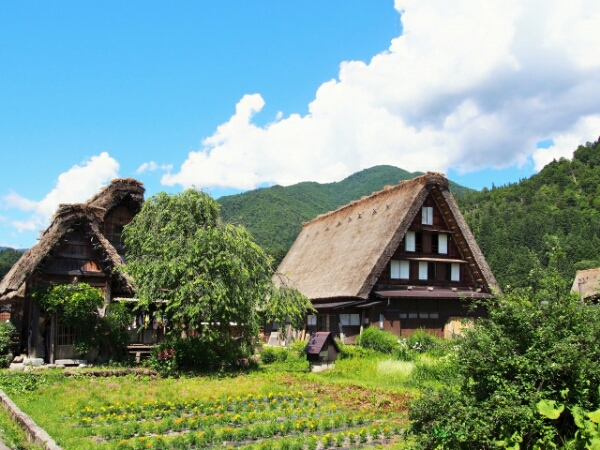
Are you familiar with Shirakawa-go and the Gokayama Settlement? The harmony between nature and the lives of the locals there is fascinating. It’s also one of Japan’s important World Heritage Sites that is popular among the Japanese. Gifu Prefecture’s Shirakawa-go and Toyama Prefecture’s Gokayama are both historic names in the Shōgawa area. This article highlights of important historic points and the beauty of Shirakawa-go. As we shall see, Shirakawa-go wasn’t a scenic spot from the beginning; it’s history is filled with interesting events.
Beautiful Harmony of Scenery and Traditional Activities Every Season
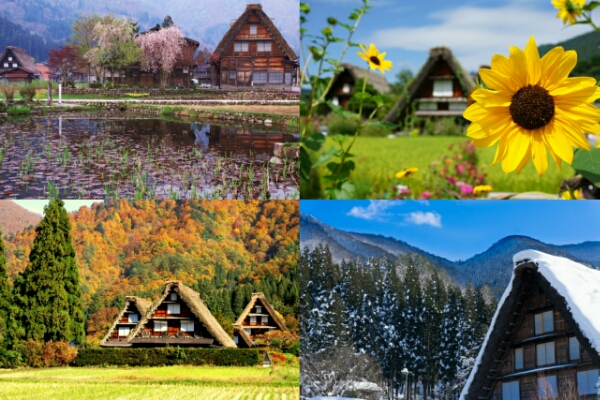
Shirakawa-go changes it’s colors every season. It’s a place that has a long history and combines traditional lifestyle with the beauty of nature. In spring, the cherry blossoms bloom; in summer, the greenery complements the blue sky and the houses to bring back memories of a traditional summer in Japan; in autumn, the red leaves shine brightly; and in winter, the white snow covering the traditional architecture creates a whole new world. It allows us to picture the four seasons that our ancestors cherished. The changing scenery is what attracts many people from both in and out of Japan to Shirakawa-go.
The Natural Environment is More Severe Than You Think
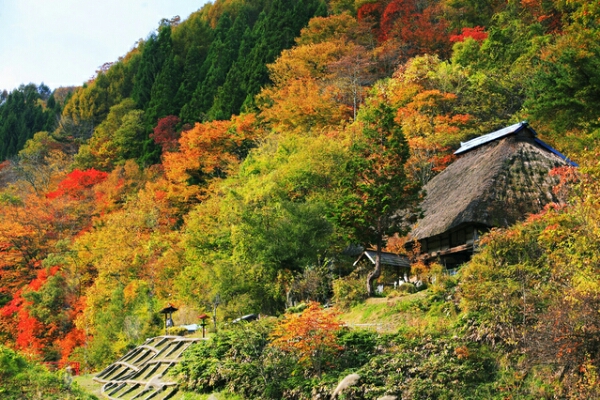
Once autumn ends, a lot of snow falls onto Shirakawa-go. In fact, around 100 tons of snow fall onto the roofs of the traditional houses! That’s equivalent to the weight of 2000 people; each who weigh 50kg. In addition, the geography of Shirakawa-go isn’t that great. It’s narrow and surrounded by the valleys created by the Hida Mountain Range. It’s very rare that such a difficult place to live becomes such an important historic site.
The Amazing Architecture that Allowed the Villagers to Adapt
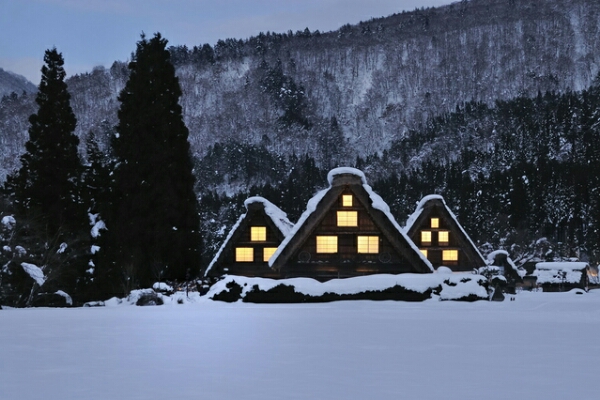
In order to deal with the heavy snowfall, the people of Shirakawa-go used thatched roofs. The steep gable roofs allowed the snow to fall to the side. Because the shape of the roof resembled people putting their hands together, it became known as Gassho-zukuri. This type of roof also prevented leaks from rain. This is because the material used in the roof was an excellent absorbent. The thatch expanded as it absorbed water, and because they were stacked on top of each other in many layers, it didn’t allow a single drop of water to leak into the house. The steep slope would then force the water out to the side so it wouldn’t leak. The efficient roofs were changed once every few decades all at once. Since it was a small village, the people were able to help each other out to keep the system running.
Gassho-zukuri Supported Life at Shirakawa-go

The Gassho-zukuri also supported the industry in Shirakawa-go. The attic was used for sericulture. It’s a perfect spot to do this because it’s cool during the summers and warm during the winters. Production of nitrous smoke also began. It’s an ingredient of gunpowder that was made by using feces of silkworms. The Gassho-zukuri was not only a convenient roof to keep people warm during the winter, but also the center of work and production. Since the travel ban in Japan (sakoku) was lifted, inexpensive smoke and chemical fiber from overseas flowed into Japan, causing the core industry in Shirakawa-go to decline. Depopulation advanced further during the period of high economic growth, but Shirakawa-go came back to life.
The Surge in Popularity was the Result of a German!?
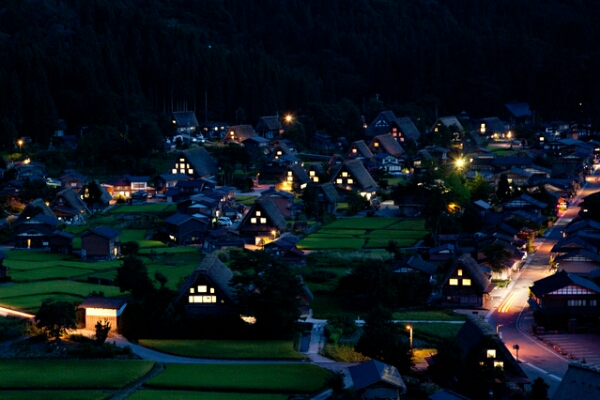
Japan succeeded in modernizing, so traditional sceneries like those that can be found at Shirakawa-go were quite rare. The fact that it was in a remote location helped the village maintain its beautiful landscape. German architect Bruno Taut praised the Gassho-zukuri which caused the popularity of the village to soar. Finally, Shirakawa-go was registered as a World Heritage Site and currently attracts many visitors from around the world.
Visit These Areas While You’re Here!
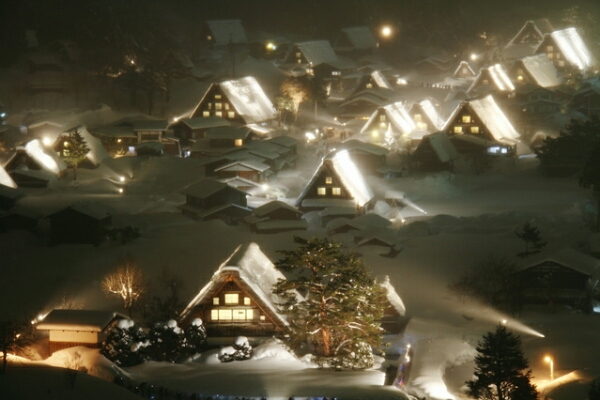
The Gassho-zukuri style houses are scattered around Shirakawa-go. You can enjoy meals and even stay at inns nearby while learning about the rich history of the village. Shirakawa-go is a prime example of a Living Strategy. In other words, the lifestyle of the villagers is an important aspect of the culture. After touring the place, take note of the warmth inside the house. At Shirakawa-go, you can gather around the fireplace and listen to traditional music while eating traditional food. Shirakawa-go is also recommended for couples; the lights at night are phenomenal.
Wada House
It’s the largest Gassho-zukuri in the village. Inside you can learn about Gassho-zukuri.
Official URL: http://ml.shirakawa-go.org/en/guide/32/
Outdoor Museum Gassho-zukuri Minkaken
You can see not only the elegant landscape but also the main building and the attic. Exhibits and experiential learning are abundant, too.
Official URL: http://www.shirakawago-minkaen.jp/english/admin
Ogimachi Castle Track Observation Deck
You can enjoy the scenery of Shirakawa-go more dynamically by viewing the nature from a higher point.
Official URL: http://ml.shirakawa-go.org/en/guide/121/
Ojirakawa River Outdoor Bath
Wash away your body and mind clearly by enjoying a relaxing hot spring and watching the great nature.
Official URL: http://shirakawa-go.org/kankou/guide/205/ (Japanese)
How to Get There
If you wish to use public transportation, you can go to Nagoya by bullet train from Tokyo or Osaka. From there you can go to Shirakawa-go using the Meitetsu Bus Center at Nagoya Station from “Shirakawa-go Line” on the Gifu bus. There are also other routes via Takayama or Kanazawa. The estimated time from Nagoya to Shirakawa-go is about 2 hours and 50 minutes. More details can be found here.
Shirakawa-go Once Struggled but Shines Today
Shirakawa-go was not a popular destination from the beginning. The architecture, beautiful nature, and our ancestor’s efforts were not immediately appreciated. People realized the beauty of Shirakawa-go only after many generations. When visiting the sightseeing spots, by all means touch on the history. Surely, recollections of a simple trip will turn into lasting memories that will remain in your hearts for a long time.
